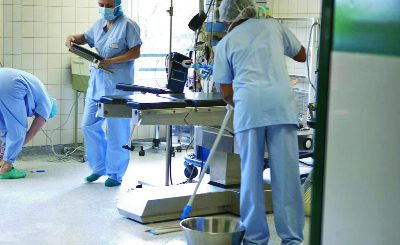Quest to Cross the Atlantic in An Hour
A trans-Atlantic journey of just sixty minutes has been promised since the dawn of supersonic flight, but is it now closer to reality?
In late September, a secretive experimental vehicle roared into the clear blue skies above a military base deep within the Arctic Circle in Norway. As the sleek, rocket approached its target altitude of 350km (218 miles), it began to arc back to earth, gradually accelerating to so-called hypersonic speeds of up to Mach 8 – about 9,800km/h (6,100 mph).
The test was the fifth of nine planned launches for the Hifire vehicle, which its backers claim “could be a major step forward in the quest for hypersonic flight”, generally regarded as Mach 5 and above. At these speeds, headline writers like to say, we could soon be zipping from London to New York in just one hour.
It is a promise that is often repeated about Hifire and other vehicles, such as the experimental US Air Force X-51A WaveRider, that had its latest (unsuccessful) test in August. Yet, delve back in history, you find similar promises.
In the pages of popular books, magazines and newspaper comics, the hyperfast world of airline travel was predicted to be just over the horizon. There was seemingly no limit to humanity’s capability to zip about the globe with increasing speed. In his 1965 book Supersonic Transport, Irwin Stambler charts the progression of time it took to cross the Atlantic in history: from 350 hours on wooden ships to 120 hours on steam ships to 60 hours in dirigibles to 12 hours prop planes to 6 hours in planes of the very near future. The graph continues and projects forward to when the one hour barrier would be passed.
It was written at a time when air travel was emerging as a reasonably affordable option for many middle class people and there was reason to be optimistic that not only would prices continue to fall, but jets would continue to get faster.
Needle point nose
This period of optimism started on 14 October 1947, when Air Force pilot Charles “Chuck” Yeager dropped from the bomb bay of a B-29 bomber in the experimental X-1, a rocket-powered airplane that was the first to break the sound barrier.
In the following years, the prospect of supersonic – and faster – air travel was always just around the corner. On 22 January 1953, for example, the Gleaner, a paper based in Kingston, Jamaica, carried a story from the Associated Press with the headline “London to N.Y in one hour seen”. The story quoted a talk given by the then chief executive of British Overseas Airways to the Aircraft Recognition Society. “In the next 50 years our grandchildren will probably be looking at supersonic commercial aircraft carrying up to 500 passengers at fares cheaper than third class travel today,” he was quoted as saying.
The first vehicles to begin to test these claims – as with today’s hypersonic craft – were built and operated by the military. This was in part out of necessity and precedent. But, as Stambler notes in his book, building a military plane and a commercial “supersonic transport” for passengers are two completely different challenges. Providing an acceptable experience for paying customers (taking into account high temperatures, appropriate cabin pressurization, and so on) is one of the obvious and yet daunting challenges of non-military high-speed aircraft.
But that didn’t stop people trying. In Europe, the UK and French governments subsidised designs that would eventually become Concorde, while in Russia, plans were revealed form the Tupolev Tu-144, nicknamed Concordski for its similarity to the European craft. In the US, various firms hawked competing designs. In a 1960’s Popular Mechanics article titled “Here’s a peek at tomorrow’s huge planes”, the writer describes two different designs from North American Aviation and Lockheed. The North American Aviation was designed primarily for military use, but Lockheed focused on the mass market.
“Lockheed officials, arguing that there is now no technical , operational or economic reason why a supersonic transport could not be developed in the US, suggest that its shape could be needed-pointed fore and aft, and that it have a swept back stabilizer near the front end of the fuselage,” it reads. “Passengers would sit forward of the delta wing.”
The steel plane would cost $160m to develop, it says, but the firm believed it could sell up to 200 of them at $9,240,000 each.
By the early 1960s, Concorde was given the go ahead. However, its high cost meant that the French Aerospatiale and the British Aircraft Corporation had to combine forces. Their final design was revealed in March 1969, when the sleek-nosed aircraft climbed into the sky for the first time.
‘Speeding bird’
In the run up to this 27 minute maiden flight, supersonic transport was a recurring theme in popular culture. For example, the July 11, 1965 edition of the Sunday comic strip Our New Age, written by Athelstan Spilhaus, promised readers that supersonic commercial aircraft would become a reality by 1972. The comic strip, taking its cues from Concorde, explained that these high-speed vehicles will look “just like paper darts – just one triangular wing and a vertical tail – but built of titanium alloys to withstand the heat.”
The strip explained that while the 200 passenger supersonic planes of tomorrow would travel supersonically above (45,000 feet), they would have to take off and descend slowly in order to not disturb people on the ground, and even break windows in areas around the airport.
The last frame of the strip paints a glorious picture for the wide-eyed airline passenger of tomorrow: “cruising at altitudes over 70,000 feet, you may see aurora, a dark blue sky and the curvature of the earth – while going three times the speed of sound.”
Alas, it wasn’t meant to be; at least not for long. Concorde began commercial flights in 1976, becoming one of only two supersonic passenger planes to ever fly. But in perhaps the most blatant affront to the theory of exponential technological growth (at least that the market will sustain), ceased flights 27 years later following a deadly crash and ongoing concerns about safety and cost. No commercial supersonic transport has so far replaced it, despite various designs being put forward.
Although Concorde set many records, it did not come close to the mythical one hour crossing between New York and London. Its fastest crossing occurred on 7 February 1996 when Captain Leslie Scott flew from the US to the UK in two hours 2 hours 52 minutes and 59 seconds. The Press Association reported that the Concorde “breezed into the record books – thanks to 175mph tail winds across the Atlantic.
“The aircraft averaged more than 1,250 miles an hour all the way from take-off to landing – travelling a mile every three seconds,” the report read.
Other craft have admittedly come closer. In 1974 two American Air Force officers flew their SR-71A “Blackbird” from New York to London in one hour 54 minutes 56.4 seconds. But, it seems that despite the promises of yesteryear, a one hour flight still remains firmly in the future.












Recent Comments